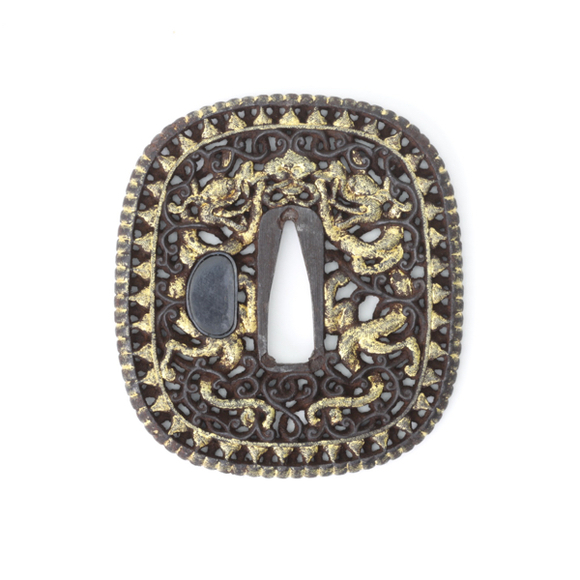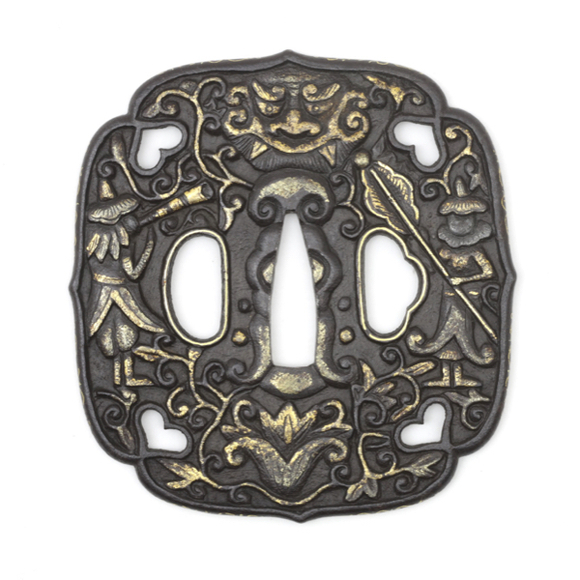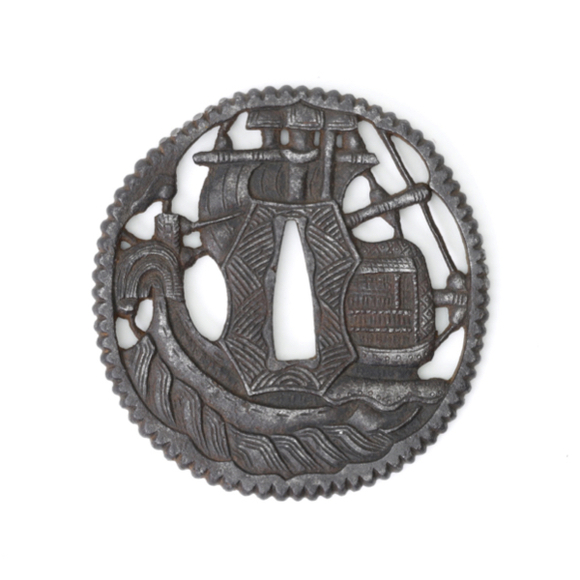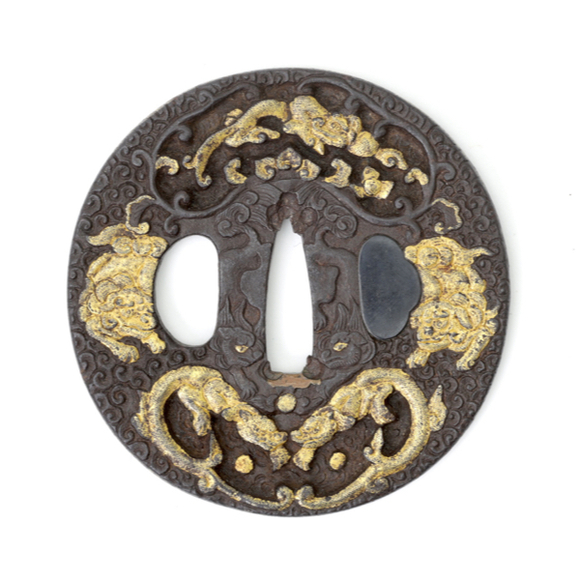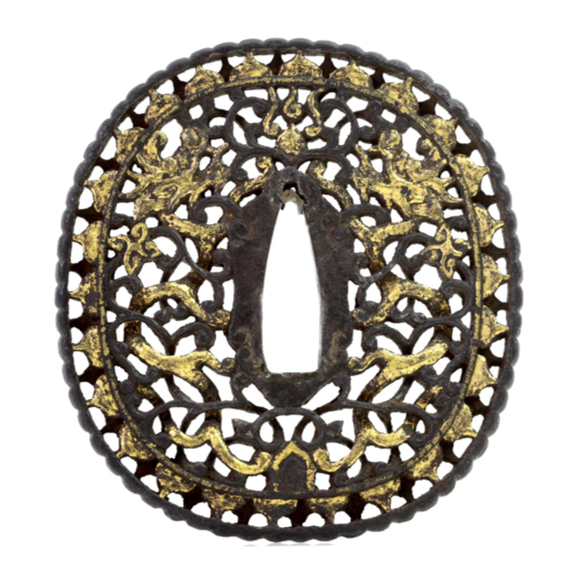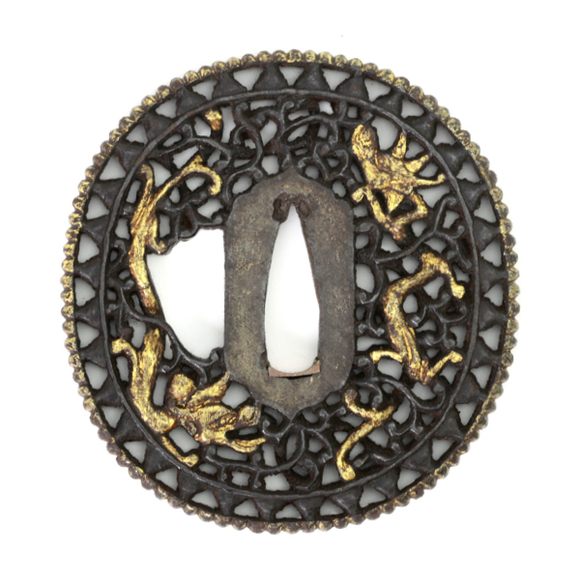Of pierced iron, elaborately cut with lotus petal border.

78 x 73 x 5 mm
110 grams
Iron, gold, shakudō
Canton, China
For the Japanese market
18th century
Introduction
Among Nanban tsuba there is a genre that is best described as "Asian export sword guards," and among those, there is a distinct group that was made in China, for the Japanese market. The production center was most likely Canton.
For more information, see my article: Nanban tsuba, a Canton group.
This example
A lobed variety, a shape used for sword guards both in China and Japan. In Japan, the shape was called mokkō-gata (木瓜形).
The center plate diverges somewhat from the typical lingzhi mushroom elements usually seen in the center, this time it is pointy towards the top and bottom. The piercing and decoration however are so Cantonese that it perfectly fits within the group. It features fine openwork with six small dragons scattered through the design.
The openwork has eleven areas of undercutting, and a "sacred jewel" consisting of a little ball, in the upper center, which can move freely inside its compartment. The rim is beaded with an inner raised ring on each side.
One of the hitsu-ana was plugged in Japan with the prized shakudō, a copper-gold alloy patinated to a "raven black".



Unusual tsuba with foreign figures and Chinese auspicious symbols.
In the style of northern work of the 16th and 17th centuries

